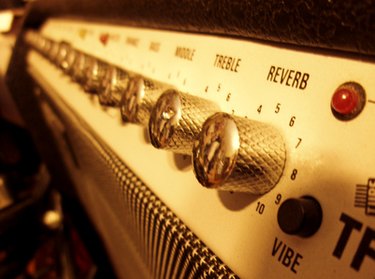
Electronic signal amplifiers come in two basic types: those that can amplify a steady voltage (DC) and those that block DC but amplify audio and higher frequencies. AC amplifiers reject noise more easily, while DC amplifiers have better low-frequency response.
Amplifier
Video of the Day
An electronic amplifier takes in a weak signal and makes it stronger. To do this, you need active components, such as vacuum tubes, transistors or integrated circuits, and a power source.
Video of the Day
Offsets
A steady DC voltage that gets mixed with an AC signal is called an offset. DC amplifiers amplify the whole signal, both AC and DC parts. This creates noise and other problems for music, so sound engineers usually use AC amplifiers.
DC Coupling
A DC amplifier accepts all parts of a signal, AC and DC. Engineers call this DC coupling or direct coupling.
AC Coupling
An amplifier with reactive components in the signal path, such as transformers or capacitors, blocks DC and permits only AC to pass through. Amplifiers with these components are called AC-coupled.
DC Uses
DC amplifiers are used in science, medicine and engineering whenever people deal with DC and slow-moving signals. Sound engineers may use DC amplifiers when they need excellent low-frequency response.
AC Uses
Home stereos make up the biggest use of AC amplifiers. Radio and television engineers use very-high-frequency AC amplifiers. The AC coupling conveniently rejects noisy DC signals.